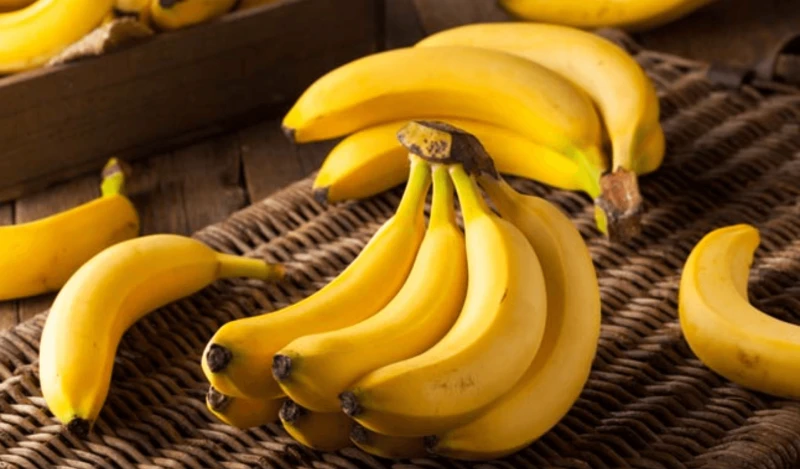Disease-resistant banana genes could accelerate effort to save Cavendish from extinction
Disease-resistant banana genes could accelerate effort to save Cavendish from extinction


Significant progress has been made in accelerating the development of banana varieties with resistance to the Fusarium fungus. Fusarium causes Panama disease, which destroys banana plantations around the world. Researchers at Lembaga Ilmu Pengetahuan Indonesia (LIPI) and Wageningen University & Research (WUR) have now succeeded in identifying resistance genes in bananas to tackle the notorious soil fungus. The discovery of these genes paves the way for accelerating the breeding of resistant bananas without the need for lengthy and expensive phenotyping tests.
Fusarium fungi are soilborne fungi that penetrate the roots of banana plants and then colonize and block the vascular system. This causes serious wilting and ultimately kills the plant. Fusarium wilt is commonly known as Panama disease, the most devastating disease in the banana cultivation sector. It has destroyed banana plantations all over the world.
In the mid-20th century, for example, the “Gros Michel” cultivar dominated global sales before being totally decimated by what is known as the Race 1 strains of the Fusarium fungus. Banana cultivation recovered thanks to a new, resistant variety: the “Cavendish”. This is now virtually the only type of banana sold in Europe. However, while this success story is now decades old, the genetic basis for the resistance remained unknown, and Race 1 strains have now spread around the world.
TR4
Meanwhile, the Cavendish turns out to be very susceptible to a new Fusarium strain, known as Tropical Race 4 (TR4). Once contaminated, plants cannot be saved. And the fungus remains present in the soil for decades.
Towards new banana varieties
It is clear that new banana varieties have to be resistant to both Race 1 and TR4. The research carried out by LIPI and WUR is therefore focused on identifying the genes responsible for such resistance. And that research has succeeded: the genes are located on chromosome 10 of the Musa acuminata variety, an ancestor of the Cavendish banana, and those genes are now being identified in more detail. This discovery makes it possible to use “markers” (small differences in DNA made visible through the use of special technology) to accelerate the development of new banana varieties without the need for lengthy and expensive phenotyping tests.
Read the original post

 | Videos | More... |

Video: Nuclear energy will destroy us? Global warming is an existential threat? Chemicals are massacring bees? Donate to the Green Industrial Complex!
 | Bees & Pollinators | More... |

GLP podcast: Science journalism is a mess. Here’s how to fix it

Mosquito massacre: Can we safely tackle malaria with a CRISPR gene drive?

Are we facing an ‘Insect Apocalypse’ caused by ‘intensive, industrial’ farming and agricultural chemicals? The media say yes; Science says ‘no’
 | Infographics | More... |

Infographic: Global regulatory and health research agencies on whether glyphosate causes cancer
 | GMO FAQs | More... |

Why is there controversy over GMO foods but not GMO drugs?

How are GMOs labeled around the world?

How does genetic engineering differ from conventional breeding?
 | GLP Profiles | More... |

Alex Jones: Right-wing conspiracy theorist stokes fear of GMOs, pesticides to sell ‘health supplements’




 California, Washington, Oregon forge immunization alliance to safeguard vaccine access against federal undermining
California, Washington, Oregon forge immunization alliance to safeguard vaccine access against federal undermining Trust issues: What happens when therapists use ChatGPT?
Trust issues: What happens when therapists use ChatGPT? Fighting deforestation with CO2: Biotechnology breakthrough creates sustainable palm oil alternative for cosmetics
Fighting deforestation with CO2: Biotechnology breakthrough creates sustainable palm oil alternative for cosmetics Viewpoint — Fact checking MAHA mythmakers: How wellness influencers and RFK, Jr. undermine American science and health
Viewpoint — Fact checking MAHA mythmakers: How wellness influencers and RFK, Jr. undermine American science and health 30-year-old tomato line shows genetic resistance to devastating virus
30-year-old tomato line shows genetic resistance to devastating virus The free-range chicken dilemma: Better for birds, but with substantial costs
The free-range chicken dilemma: Better for birds, but with substantial costs Viewpoint: Video — Big Solar is gobbling up productive agricultural land and hurting farmers yet providing little energy or sustainabilty gains
Viewpoint: Video — Big Solar is gobbling up productive agricultural land and hurting farmers yet providing little energy or sustainabilty gains ‘You have to treat the brain first’:Rethinking chronic pain with Sanjay Gupta
‘You have to treat the brain first’:Rethinking chronic pain with Sanjay Gupta
